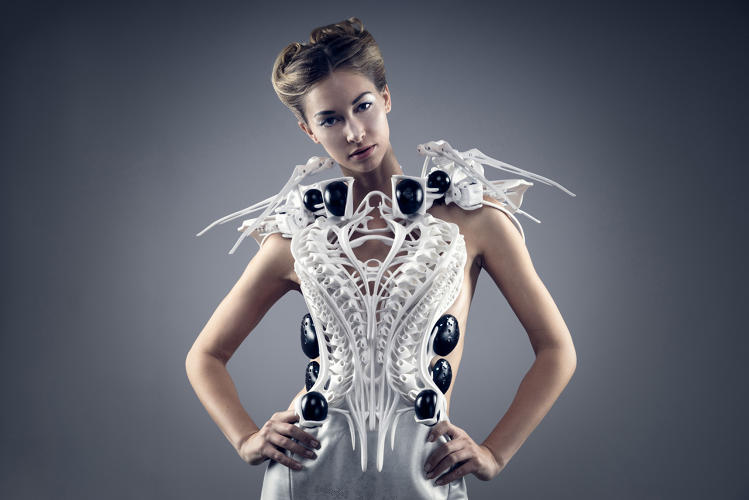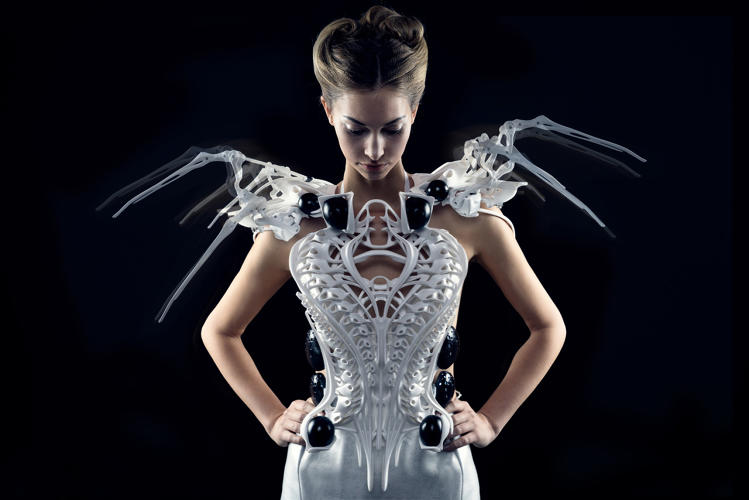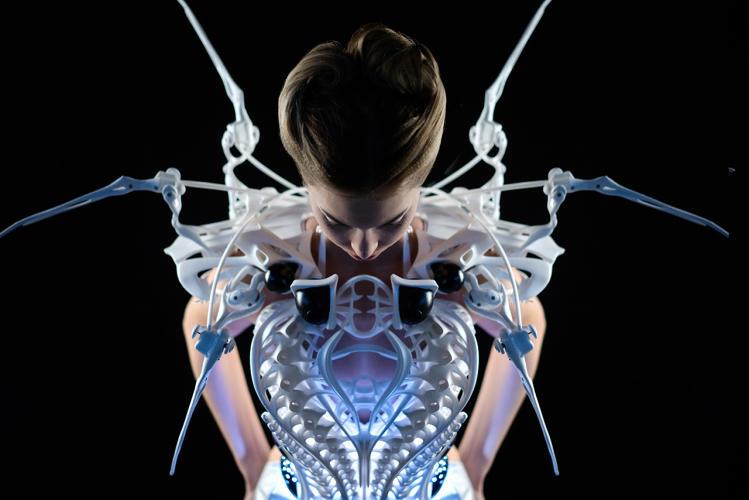b
Anouk Wipprecht’s “Spider Dress”
Having previously posted about the “Spider Dress” prototype, I was delighted by the unveiling of the finished design last week. Pearl-colored, reminiscent of Iris van Herpen‘s 3D-printed couture creations, this gorgeous dress by Dutch designer Anouk Wipprecht is a marvel of fashiontech (the intersection of fashion and technology). The animatronic garment is inspired by animal behavior, using motion and respiration sensors to respond to the approach of others – “The dress measures the wearer’s stress levels with wireless biosignals, and aggregates this information with measurements of others’ proximity and speed of approach (it can detect movement up to 22 feet away). The dress changes according to these various data inputs, gauging how the wearer is feeling about the people around her.”


